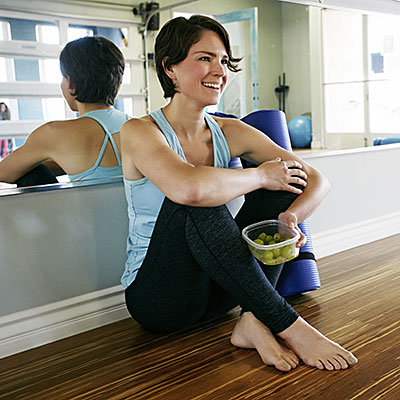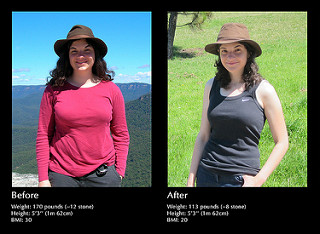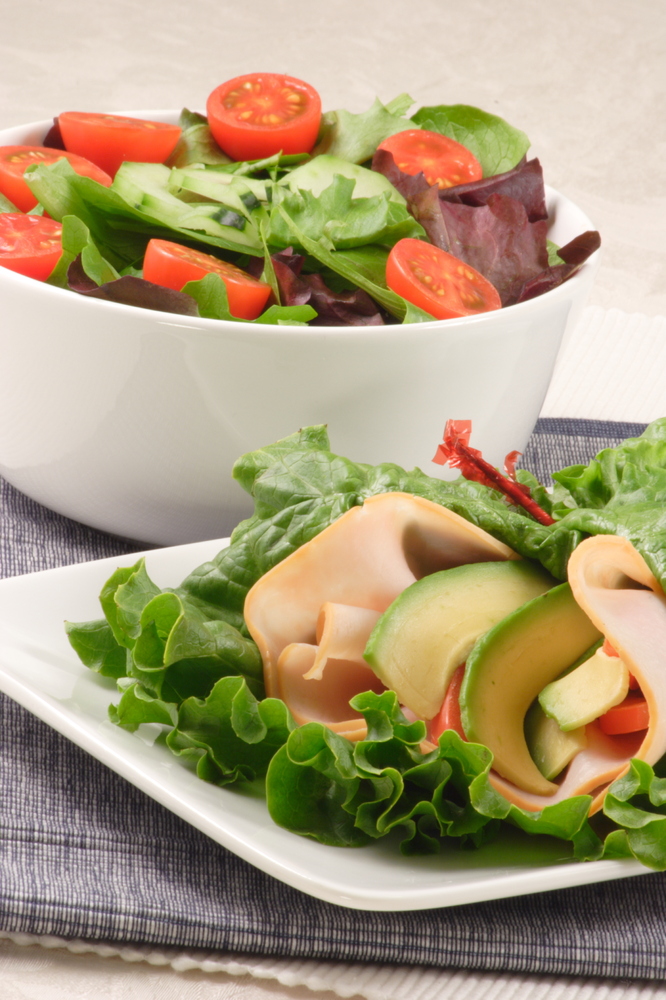Lose Weight > Common Sense To Lose Weight > Common Sense Article > 5 Diet Fails Youre Probably Making
5 Diet Fails Youre Probably Making
 Getty Images If the pounds won't come off, you're not alone. According to a survey by Marketdata Enterprises, the average American dieter makes four or five attempts to lose weight each year. It's a vicious cycle: "After a while, you feel discouraged when you don't get results, and that can wear away at your motivation," says Dawn Jackson Blatner, RD, author of The Flexitarian Diet. These dieting upgrades should do the trick once and for all.
Getty Images If the pounds won't come off, you're not alone. According to a survey by Marketdata Enterprises, the average American dieter makes four or five attempts to lose weight each year. It's a vicious cycle: "After a while, you feel discouraged when you don't get results, and that can wear away at your motivation," says Dawn Jackson Blatner, RD, author of The Flexitarian Diet. These dieting upgrades should do the trick once and for all.
Don't get us wrong—plenty of research has shown that we routinely underestimate the number of calories in our food. But when you're trying to lose weight, diet quality matters more than calorie count. A 2012 study in JAMA found that people on a low-carb, low-glycemic diet burned more calories than those who followed a low-fat, high-carb diet. "Foods that are high in carbs slow metabolic rates compared with diets higher in fat and protein," says David Ludwig, MD, director of the New Balance Foundation Obesity Prevention Center at Boston Children's Hospital. What's more, high-glycemic foods (sugar, bread, potatoes) spike blood sugar and stimulate cravings.
Focus on foods that are low in junky carbs and rich in protein. Just choose your protein carefully. A 2015 study in the American Journal of Clinical Nutrition found that folks who upped their intake of yogurt, seafood, skinless chicken and nuts lost the most weight; those who increased their consumption of red and processed meat put on pounds—particularly when it was paired with high-carb foods. (But swapping the carbs for low-glycemic foods, like veggies, helped lower weight gain.)
You've heard it a million times: Small, frequent meals help you lose weight by revving your metabolism and controlling your appetite. But dividing a 1,200-calorie-per-day plan into six meals can leave you with a growling stomach and short-circuit your diet. "You need protein, fiber and carbs in each meal to feel full, and it's tough to get that in just 200 calories," explains Blatner. In most cases, people end up overeating at their small meals—it's easy for a teaspoon of almond butter to unintentionally become three. Plus, says Blatner, "because you're faced with more food decisions, you're constantly taxing your willpower."
Think three solid meals a day. "You're a lot more likely to stick to a diet that's simple—planning six healthy meals is overwhelming," says Blatner. While you're at it, front-load calories. A 2013 study in Obesity found that people who made breakfast their biggest meal were at least twice as likely to lose weight and trim their waistlines as those who "saved" calories for dinner.
This tip gained popularity after a 2011 study showed that women who ate mac and cheese daily for a week took in around 100 fewer calories each day than they normally did. But a recent study conducted by Hollie Raynor, PhD, associate professor of nutrition at the University of Tennessee, Knoxville, revealed that when people on a calorie-restricted diet were limited to two types of junk food, they didn't lose more weight than dieters who could eat any kind they wanted.
Branch out. As Raynor says, "Experimenting with different fruits and vegetables could prompt you to eat more of them." Vary your protein, too—a lot of us skimp on superstars like fish and beans.
Regular scale checks have been linked to better weight-loss maintenance, but you can overdo it. One Journal of Obesity study found that women benefited less from daily weigh-ins than men. "Hormonal fluctuations can cause water retention, making it harder to get an accurate reading," says Liz Weinandy, RD, of the Ohio State University Wexner Medical Center. "Plus, weight is more likely to be an emotional issue for women. Someone who gets a bad reading can think, 'What's the use of trying?'"
Hop on the scale about once a week—enough to sanely stay on track, according to a Plos One study. Wednesday is good, say Finnish researchers, since most of us get heavier on weekends and then drop the weight during the week.
Next Page: Diet fail #5: Trying to work off the pounds
 Getty Images Diet fail #5: Trying to work off the pounds
Getty Images Diet fail #5: Trying to work off the poundsEat less, move more: It's the most basic advice, and yet the two strategies aren't equally effective. "Weight loss is 80 percent diet, 20 percent exercise," says Craig Primack, MD, an obesity medicine specialist at the Scottsdale Weight Loss Center in Arizona. Calorie burn from exercise is too minimal to compensate for subpar food choices. The average person would have to walk 35 miles to burn the 3,500 calories it takes to lose just 1 pound.
Keep active and clean up your diet. In fact, women who did both lost more weight than those who did only one or the other, showed a study in Obesity. "Exercise also makes people feel better about their bodies and themselves," notes Dr. Primack, "and that makes it easier to stay with a diet and workout plan."
Distract yourself
In a study in the journal Appetite, people who played Tetris for three minutes found that their desire to nosh diminished faster than those who weren't distracted. We tend to visualize cravings; mind-stimulating activities stop us from picturing that brownie.
Lack of shut-eye can add flab, says a Mayo Clinic study that found that sleep-deprived people consumed an extra 549 calories per day, compared with those who were well-rested. Try to follow the National Sleep Foundation's guidelines and get seven to nine hours a night.
When food contrasts with the color of a plate, you tend to eat less, per research from the Cornell University Food and Brand Lab. People devoured more spaghetti and sauce when it was served on a red plate versus a white one; portion size wasn't obvious, so they OD'd.
Seeing commercials for food while watching television can trigger people to snack, according to a study published in the journal Health Psychology. That sounds like the perfect excuse to settle in for an (ad-free) Netflix binge instead. Or just pick up a good book.
Related Articles
-
Gastric Bypass Remembering Surgery 6 Years Later
September 13, 1999Do you remember where you were six years ago today?I
-
Clinical Study Validates Again That Celsius Burns Calories
Celsius Holdings announced the results of a second clinical study of C
-
How to Avoid Gaining Weight in College
Worried abou
-
Weight Loss Dont Cut Out The Good Fat
When you are considering going on a weight loss diet, probably you hav
-
Skin Deep: The Psychology Behind Plastic Surgery
Cosmetic surgery has actually experienced a boom of over 700% in the p
-
Metabolism Drug Induced Weight Loss Can Be Effective But Are You Aware Of The Risks
A metabolism drug like ephedrine, has shown many people how to burn fa
- DON'T MISS
- Why Sleep Is Key for Weight Loss
- Are You Clean Inside?
- How To Make Weight Loss Exercises Easy and Enjoyable
- Understanding the Basics of Plastic Surgery
- Your Dental Condition Is An Indicator Of Your Overall Health
- Why does exercise alone not aid long-term weight loss?
- 15 Reasons Why Your Skinny Friend is Skinny (and why you're probably not)
- What Is Glycemic Index and How It Helps You Shed Extra Pounds
- The 3 Steps to Get Rid of Your Fat Every Single Time
- How To Lose Weight Permanently - Hope For Yo-Yo Dieters




